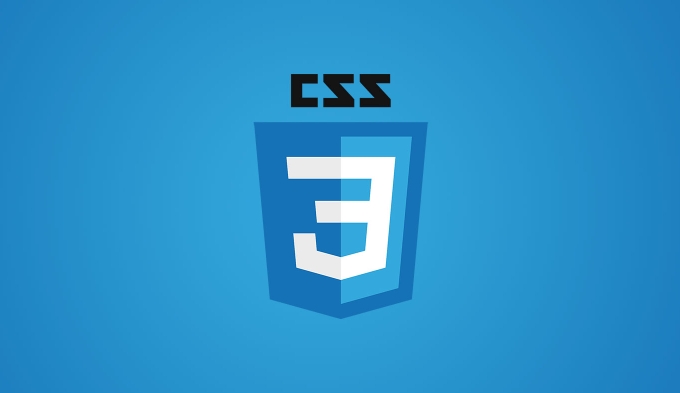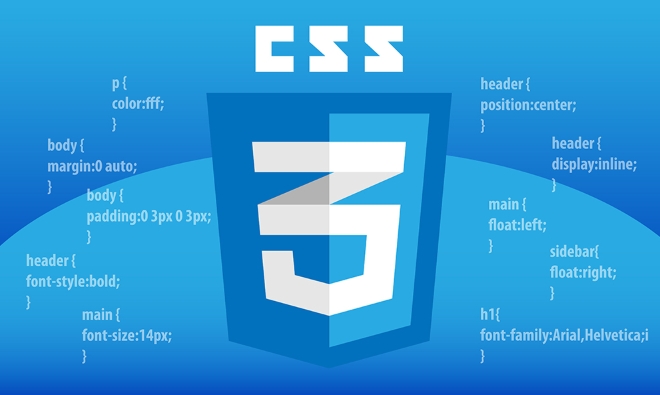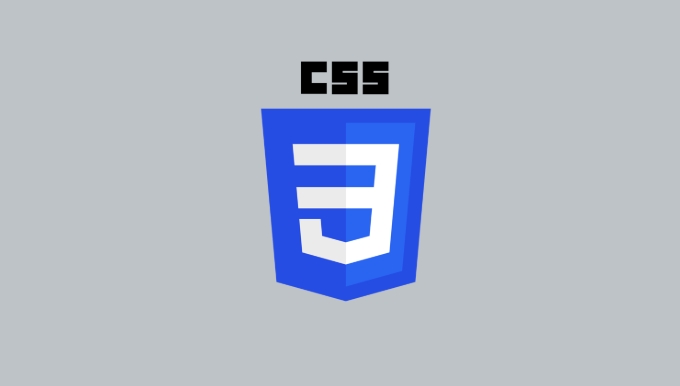writing-mode is an attribute in CSS that controls the writing direction of text. Common values ??include horizontal-tb (default), vertical-rl (vertical from right to left) and vertical-lr (vertical from left to right); its common uses include vertical text that supports Japanese and Korean languages, vertical navigation bar layout, PDF reader interface adaptation, etc.; text-orientation is used to control the direction of a single character in vertical mode. Common values ??include mixed (default, Latin characters remain horizontal), upright (all characters are displayed vertically), sideways (characters rotate 90 degrees clockwise); when processing RTL languages ??such as Arabic, direction: rtl and unicode-bidi: bidi-override To unify text orientation and ensure layout consistency; when using these attributes, you need to pay attention to their impact on element size, layout logic and overall style to improve multilingual compatibility and professionalism of web pages.

CSS writing modes and text orientation control are often overlooked but very critical parts of web page layout. Especially when dealing with multilingual websites or scenarios where vertical text is required, mastering these features makes your page more flexible and professional.

What is writing-mode?
writing-mode property determines how the text block flows on the page. By default, most browsers use left-to-right, top-to-botb (i.e. horizontal-tb ), which is suitable for English, Chinese and other languages.

But if you need to deal with languages ??like Japanese, Korean, or Mongolian that have traditionally written vertically, you can use:
writing-mode: vertical-rl; /* Row vertically from right to left*/
or

writing-mode: vertical-lr; /* vertically from left to right*/
After this setting, the text in the entire element will automatically become vertical, and the layout will be adjusted accordingly. For example, the width and height of a div will be recalculated based on the new writing direction.
Common uses:
- Vertical texts in Japanese, Korean, and traditional Chinese websites
- Change the horizontal navigation bar to vertical arrangement, eliminating the flex or grid settings
- Adapt content in different languages ??when creating PDF reader interfaces
text-orientation controls the orientation of a single character
When using vertical-rl or vertical-lr , some characters remain horizontally displayed by default, such as Latin letters and numbers. At this time, you can use text-orientation to control their orientation.
Common values ??include:
-
mixed: default value, Latin characters are kept horizontal, Chinese characters and other ideograms rotate to vertical -
upright: All characters are displayed vertically (suitable for full-width symbols and Japanese Kanna) -
sideways: The overall character rotates 90 degrees clockwise, suitable for title display
For example, if you want a text that is mixed with English and Chinese to look more neat when vertically arranged, you can write it like this:
.vertical-text {
writing-mode: vertical-rl;
text-orientation: upright;
}In this way, whether it is English letters or Chinese characters, they will be presented in a unified vertical direction.
Use direction and unicode-bidi together
Although it does not fall into the direct category of writing modes, it is often necessary to use direction and unicode-bidi in conjunction with RTL (right to left) languages ??(such as Arabic and Hebrew).
-
direction: rtl;allows text within the entire element to be displayed from right to left -
unicode-bidi: bidi-override;Force overwrite the browser's default bidirectional algorithm to ensure the consistent direction
For example:
.rtl-content {
direction: rtl;
unicode-bidi: bidi-override;
}This combination is especially useful in international websites, especially when users dynamically change the direction of text when switching languages.
It should be noted that RTL layout is not only a change in text direction, but also affects style logic such as padding, margin, flex arrangement, etc. It is recommended to manage it in combination with CSS tool classes or BEM naming specifications.
Basically that's it. Writing mode and text orientation may seem simple, but it is easy to encounter compatibility or misalignment problems in practical applications. Using these attributes reasonably can make your web page more adaptable and international.
The above is the detailed content of Understanding CSS Writing Modes and text orientation. For more information, please follow other related articles on the PHP Chinese website!

Hot AI Tools

Undress AI Tool
Undress images for free

Undresser.AI Undress
AI-powered app for creating realistic nude photos

AI Clothes Remover
Online AI tool for removing clothes from photos.

Clothoff.io
AI clothes remover

Video Face Swap
Swap faces in any video effortlessly with our completely free AI face swap tool!

Hot Article

Hot Tools

Notepad++7.3.1
Easy-to-use and free code editor

SublimeText3 Chinese version
Chinese version, very easy to use

Zend Studio 13.0.1
Powerful PHP integrated development environment

Dreamweaver CS6
Visual web development tools

SublimeText3 Mac version
God-level code editing software (SublimeText3)

Hot Topics
 How can I include CSS only on some pages?
Jun 11, 2025 am 12:01 AM
How can I include CSS only on some pages?
Jun 11, 2025 am 12:01 AM
There are three ways to selectively include CSS on a specific page: 1. Inline CSS, suitable for pages that are not frequently accessed or require unique styles; 2. Load external CSS files using JavaScript conditions, suitable for situations where flexibility is required; 3. Containment on the server side, suitable for scenarios using server-side languages. This approach can optimize website performance and maintainability, but requires balance of modularity and performance.
 Flexbox vs Grid: Understanding the Key Differences in CSS Layout
Jun 10, 2025 am 12:03 AM
Flexbox vs Grid: Understanding the Key Differences in CSS Layout
Jun 10, 2025 am 12:03 AM
Flexboxisidealforone-dimensionallayouts,whileGridsuitstwo-dimensional,complexlayouts.UseFlexboxforaligningitemsinasingleaxisandGridforprecisecontroloverrowsandcolumnsinintricatedesigns.
 Creating an Auto-Closing Notification With an HTML Popover
Jun 10, 2025 am 09:45 AM
Creating an Auto-Closing Notification With an HTML Popover
Jun 10, 2025 am 09:45 AM
The HTML popover attribute transforms elements into top-layer elements that can be opened and closed with a button or JavaScript. Popovers can be dismissed a number of ways, but there is no option to auto-close them. Preethi has a technique you can u
 What is 'render-blocking CSS'?
Jun 24, 2025 am 12:42 AM
What is 'render-blocking CSS'?
Jun 24, 2025 am 12:42 AM
CSS blocks page rendering because browsers view inline and external CSS as key resources by default, especially with imported stylesheets, header large amounts of inline CSS, and unoptimized media query styles. 1. Extract critical CSS and embed it into HTML; 2. Delay loading non-critical CSS through JavaScript; 3. Use media attributes to optimize loading such as print styles; 4. Compress and merge CSS to reduce requests. It is recommended to use tools to extract key CSS, combine rel="preload" asynchronous loading, and use media delayed loading reasonably to avoid excessive splitting and complex script control.
 How to use Lotties in Figma
Jun 14, 2025 am 10:17 AM
How to use Lotties in Figma
Jun 14, 2025 am 10:17 AM
In the following tutorial, I will show you how to create Lottie animations in Figma. We'll use two colorful designs to exmplify how you can animate in Figma, and then I'll show you how to go from Figma to Lottie animations. All you need is a free Fig
 Breaking Boundaries: Building a Tangram Puzzle With (S)CSS
Jun 13, 2025 am 11:33 AM
Breaking Boundaries: Building a Tangram Puzzle With (S)CSS
Jun 13, 2025 am 11:33 AM
We put it to the test and it turns out Sass can replace JavaScript, at least when it comes to low-level logic and puzzle behavior. With nothing but maps, mixins, functions, and a whole lot of math, we managed to bring our Tangram puzzle to life, no J
 External vs. Internal CSS: What's the Best Approach?
Jun 20, 2025 am 12:45 AM
External vs. Internal CSS: What's the Best Approach?
Jun 20, 2025 am 12:45 AM
ThebestapproachforCSSdependsontheproject'sspecificneeds.Forlargerprojects,externalCSSisbetterduetomaintainabilityandreusability;forsmallerprojectsorsingle-pageapplications,internalCSSmightbemoresuitable.It'scrucialtobalanceprojectsize,performanceneed
 Does my CSS must be on lower case?
Jun 19, 2025 am 12:29 AM
Does my CSS must be on lower case?
Jun 19, 2025 am 12:29 AM
No,CSSdoesnothavetobeinlowercase.However,usinglowercaseisrecommendedfor:1)Consistencyandreadability,2)Avoidingerrorsinrelatedtechnologies,3)Potentialperformancebenefits,and4)Improvedcollaborationwithinteams.






